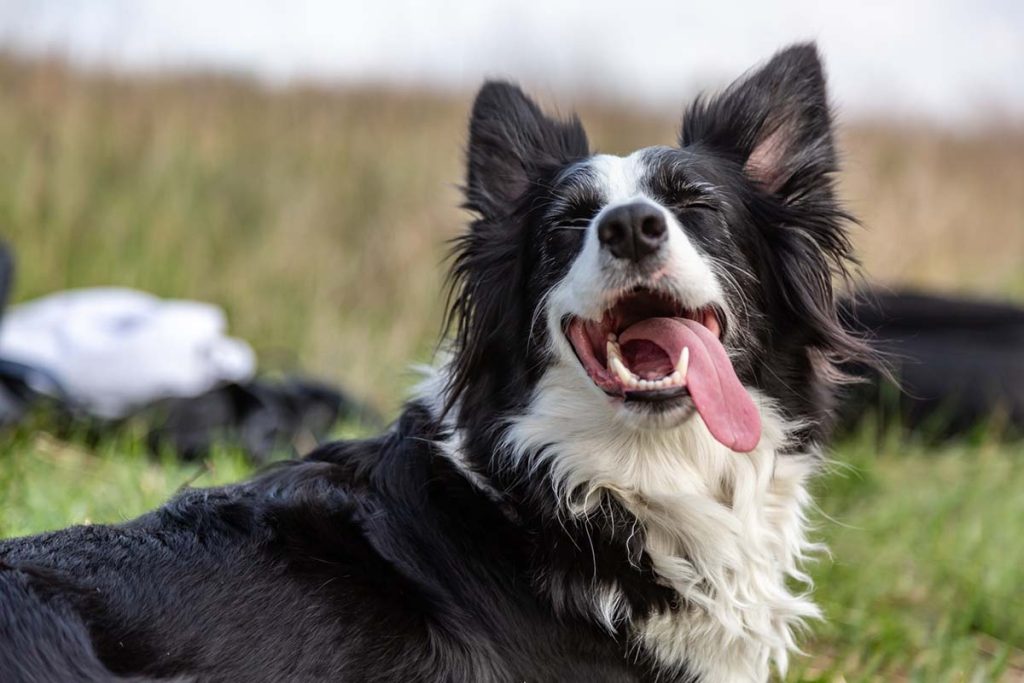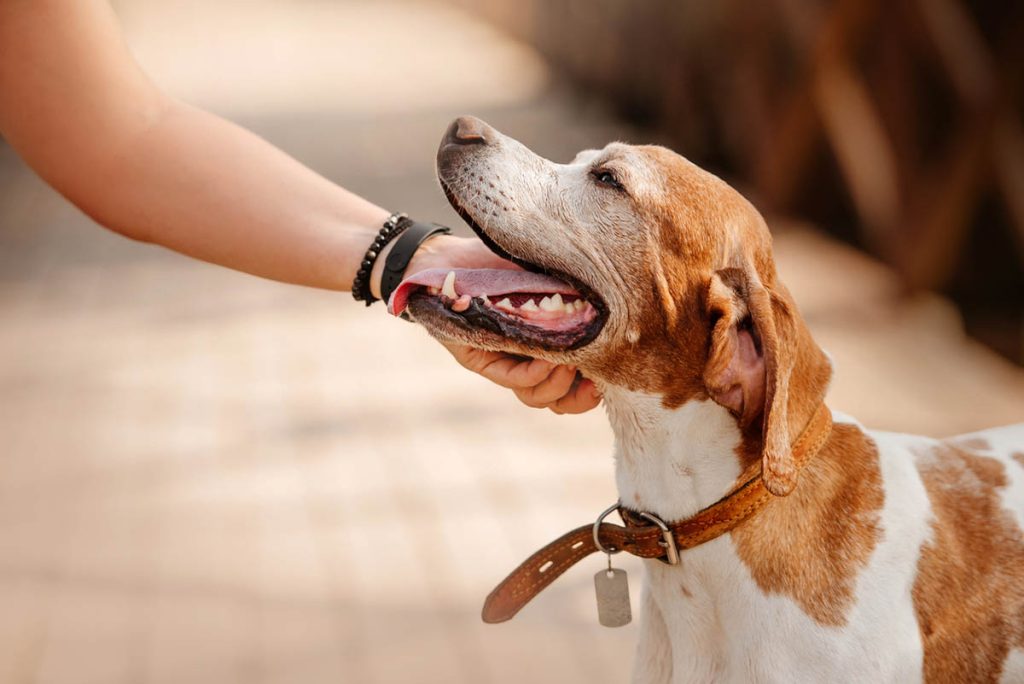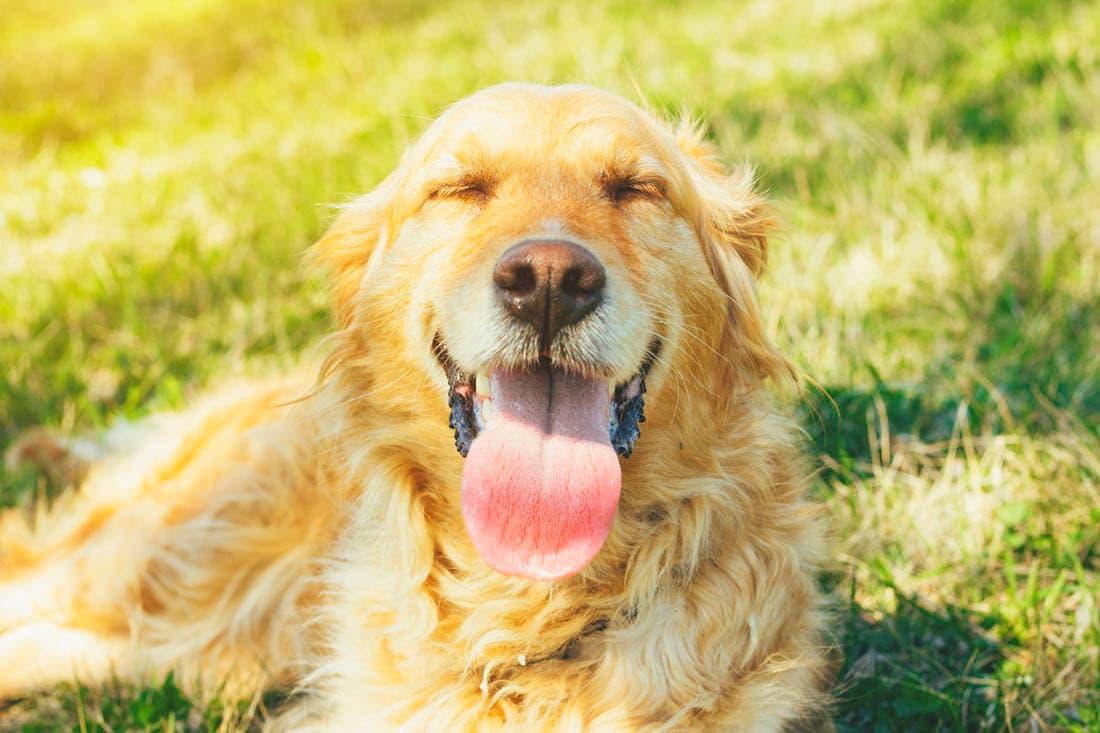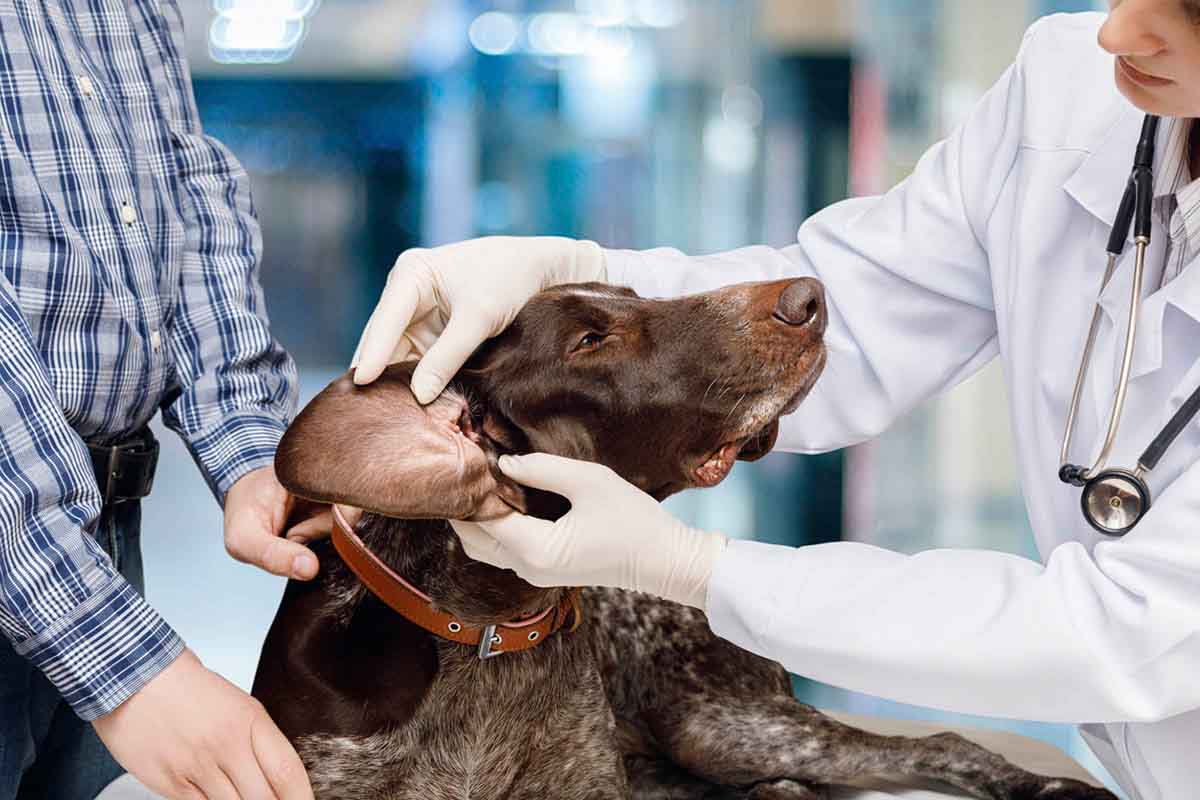Why Is My Dog Panting So Much?
When should you worry about your dog’s heavy breathing, and how much is too much panting for a healthy pup?
Panting in dogs can be due to excitement, exercise, and sometimes even stress. But when should you worry about your dog’s heavy breathing, and how much is too much panting for a healthy pup?
Why Do Dogs Pant?

Dogs pant for several different reasons. From cooling themselves down to showing excitement or stress, panting is a typical dog behavior but an important one to pay attention to. These are the most common reasons for panting in dogs.
Activity
Dogs pant more during physical activity because their bodies are moving more and their blood is pumping faster to keep up. When this happens the heart needs more oxygen from the lungs which causes panting.
Panting during exercise or vigorous activity is totally normal for dogs. Just be sure to give them a chance to catch their breath!
Excitement
Being excited may be another reason why dogs are panting heavily. You may notice your dog pants when getting ready to go for a walk or when they see familiar faces. This type of panting is because they’re happy!
Excited panting can usually be identified by more shallow, short breaths than panting from overheating or exhaustion, and typically isn’t a cause for concern unless it becomes excessive.
Overheating
Panting can be a sign of overheating in dogs. Like sweating for humans, panting is part of your dog’s natural cooling system in warm weather. Heavy panting allows dogs to circulate cool air through their system by cooling their nose, tongue, and mouth, in turn helping to cool their blood and their entire body.
If you notice your dog panting more on hot days, you can help them cool down by getting them to a shady place to rest and plenty of opportunities for cool water to reduce their body temperature and risk of heatstroke.
Stress
Dogs may pant as a response to emotions like stress, fear, or anxiety as part of a fight or flight response. Their rapid breathing brings oxygen to the blood quickly, preparing their body to run if needed. Common reasons dogs get scared or anxious could be as simple as a thunderstorm or as complex as separation anxiety, either of which can lead to tension and panting.
Paying attention to your dog’s body language will help you recognize other signs of stress and take action to help them. Creating a safe space for your dog like a quiet room or a special secluded spot with their bed or toys.
Pain
Dogs tend to pant when they’re in pain because their hearts are beating faster. When your dog is in pain, their body releases extra cortisol which leads to excessive panting. The stress of being in pain can also contribute to rapid breathing. Other signs your dog may be in pain could be whining, limping, lack of appetite, avoiding being touched, or sudden changes in behavior.
Should I Be Concerned About My Dog’s Breathing?

There are a number of factors that could contribute to the cause of your dog’s heavy breathing, and some of them are completely harmless. It can be difficult to know exactly when panting becomes a problem, so it’s important to pay attention to your dog’s body language for other clues or indicators of issues.
When Should I Worry About My Dog Panting?
A healthy dog will have a respiratory rate of between 15 and 35 breaths per minute when resting. As long as your furry friend is within this range, there’s no cause for concern.
When your dog is active or exercising, their breathing rate will naturally increase. Heavy breathing during exercise is normal behavior, but more than 40 breaths in a minute for a dog at rest is considered excessive. Pet owners in this scenario should seek veterinary care ASAP.
Common Causes of Excessive Panting in Dogs
While normal panting is generally nothing to worry about in healthy dogs, excessive panting can have an underlying cause and indicate certain medical conditions in dogs. Here are some of the underlying health conditions in dogs that may cause more panting than normal.
Cushing’s Disease
Hyperadrenocorticism, widely known as Cushing’s disease, is a condition caused by overactive adrenal glands in dogs. These glands are responsible for controlling your dog’s cortisol levels, and too much cortisol can cause excessive thirst, hunger, and panting in pups.
Symptoms of Cushing’s disease in dogs include:
- increased thirst and appetite
- frequent urination
- a pot-bellied appearance (caused by fat redistribution)
- heavy panting
If untreated, Cushing’s disease can lead to the development of other health problems like diabetes, skin and fur issues, and congestive heart failure.
Heart Disease
Heart disease or other heart-related issues in dogs can be the cause of excessive panting. When your dog’s heart can’t pump blood as efficiently, less oxygen travels from their lungs to their heart and can cause a fluid buildup in the lungs. The shortness of breath caused by the fluid results in excessive panting in dogs.
Other symptoms of heart disease in dogs may include:
- weight loss
- abdominal swelling
- coughing
- breathing difficulty
- panting
If untreated, heart disease in dogs can lead to congestive heart failure, a condition where fluid builds up in the lungs and negatively impacts breathing.
Laryngeal Paralysis
Laryngeal paralysis in dogs is a condition where the larynx and the diaphragm — muscles that control their breathing — don’t work properly and cause their vocal cords to ‘flop’ and block their respiratory tract. This blockage of their windpipe makes it difficult to take deep breaths and leads to heavy panting.
Treatment for laryngeal paralysis typically includes surgery to ‘tie back’ the folded tissue and re-open your dog’s airway. This type of surgery has a great success rate, but recovery takes careful consideration to avoid developing respiratory issues later on.
Brachycephalic Dogs
Certain dog breeds are predisposed to respiratory issues due to the structure of their faces and heads. They are known as brachycephalic breeds. These include pugs, bulldogs, Boston terriers, boxers, and several other types of dogs who tend to have short snouts, and smaller heads. They have a shorter respiratory tract which means their breathing is sometimes shallower and more rapid than non-brachycephalic breeds.
This content is for informational use only and does not replace professional nutrition and/or medical advice, diagnosis, or treatment. It is not a substitute for specific nutrition and/or medical recommendations. Please talk with your veterinarian about any questions or concerns.








